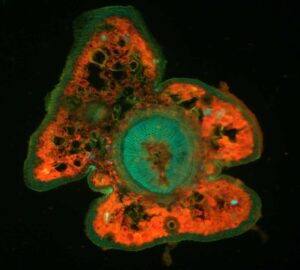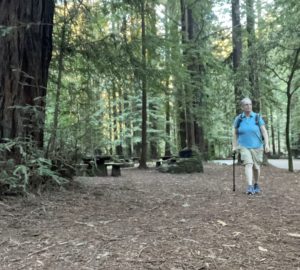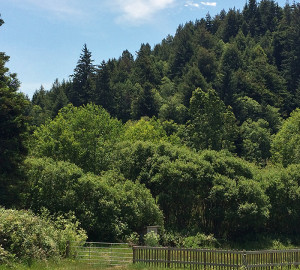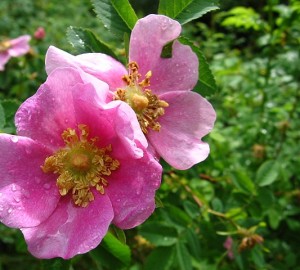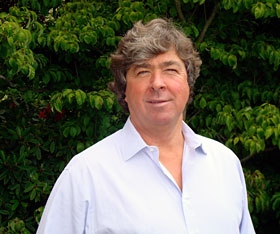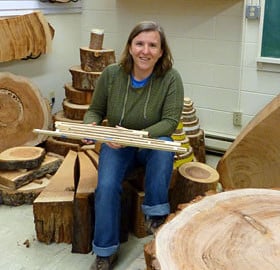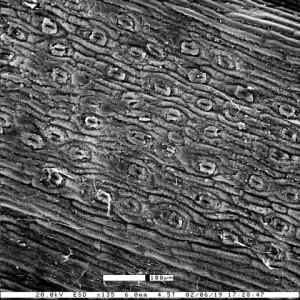
Henry David Thoreau wrote, “Nature will bear the closet inspection. She invites us to lay our eye level with her smallest leaf, and take an insect view of its plain.” His words eloquently describe a field of research that would be known many decades later as the scientific study of the phyllosphere. Simply put, this is the study of biology at the leaf’s edge and it is fascinating.
When we look closely at leaves, we see a world typically hidden from view at the microscopic scale. We see veins that cut like river channels through ridges on the leaf and a multitude of bacteria and fungi that inhabit the leaf surface.
Phyllosphere biologists work to understand how leaf microbes survive on the often harsh landscape of the leaf surface and influence the health of plants. Certainly the most notorious leaf microbes are the pathogens like Phytophthora ramorum, better known as Sudden Oak Death, that kills trees in the coast redwood forest. But also interesting are the seemingly innocuous leaf microbes that cause no apparent harm. Could these microbes actually help redwoods by absorbing water or nutrients for leaves? Current research in the Todd Dawson lab at UC Berkeley is investigating this very question with support from our Research Grants Program.
This other-worldly research may seem academic, but anyone who has had food poisoning from bad salad has been a victim of phyllosphere shenanigans. When human pathogens such as E.coli or salmonella are spread through agricultural fields by contaminated water, these bacteria join the community of microbes naturally occurring on our tasty greens like spinach or cilantro. These microbes adhere to wax on the leaf surface and stay attached despite our best effort to wash our greens before eating.
So next time you take a crunchy bite of salad or hear the wind rustling through leaves in the forest, take a moment to contemplate the phyllosphere and appreciate the world at the leaf’s edge.
For more information on what we are learning through the botanical research we support, visit our Research Grants results page.

